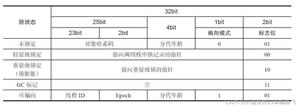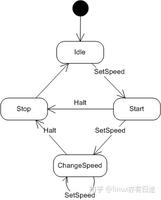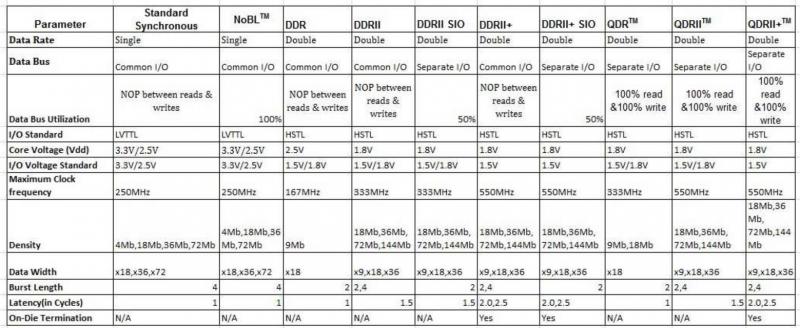深入理解系统调用

实验内容:
- 找一个系统调用,系统调用号为学号最后 2位相同的系统调用【即 97号系统调用】
- 通过汇编指令触发该系统调用
- 通过 gdb 跟踪该系统调用的内核处理过程
- 重点阅读分析系统调用入口的保存现场、恢复现场和系统调用返回,以及重点关注系统调用过程中内核堆栈状态的变化
实验环境:
VMWare虚拟机下的Ubuntu18.04.4,实验采用的内核版本为linux-5.4.34。
1 环境准备
1.1 内核编译
回退实验一的补丁操作:
cd linux-5.4.34patch -R -p1 < ../mykernel-2.0_for_linux-5.4.34.patch
make defconfig
修改内核编译配置重新编译:
#打开debug相关选项Kernel hacking --->
Compile-time checks and compiler options --->
[*] Compile the kernel with debug info
[*] Provide GDB scripts for kernel debugging
[*] Kernel debugging
#关闭KASLR,否则断点失败
Processor type and features --->
[] Randomize the address of the kernel image (KASLR)
make menuconfigmake -j$(nproc)
启动内核,此时内核无法正常运行,提示Kernel panic报错:
qemu-system-x86_64 -kernel arch/x86/boot/bzImage根据报错提示,可以看出是缺少必要的根文件系统,导致内核无法挂载。
1.2 制作根文件系统
电脑加电启动首先由bootloader加载内核,内核紧接着需要挂载内存根文件系统,其中包含必要的设备驱动和工具。
为了简化实验环境,仅借助 BusyBox 制作极简内存根文件系统,提供基本的用户态可执行程序。
首先从https://www.busybox.net下载 busybox源代码解压,解压完成后,配置编译并安装。
axel -n 20 https://busybox.net/downloads/busybox-1.31.1.tar.bz2tar -jxvf busybox-1.31.1.tar.bz2
配置编译成静态链接,不用动态链接库。
cd busybox-1.31.1make menuconfig
编译安装,默认会安装到源码目录下的 _install 目录中。
make -j$(nproc) && make install制作内存根文件系统镜像:
mkdir rootfscd rootfs
cp ../busybox-1.31.1/_install/* ./ -rf
mkdir dev proc sys home
sudo cp -a /dev/{null,console,tty,tty1,tty2,tty3,tty4} dev/
在根文件系统目录下添加init脚本文件(rootfs/init),init内容如下:
#!/bin/shmount -t proc none /proc
mount -t sysfs none /sys
echo "Wellcome MengningOS!"
echo "--------------------"
cd home
/bin/sh
给init脚本添加可执行权限:
chmod +x init打包成内存根文件系统镜像:
find . -print0 | cpio --null -ov --format=newc | gzip -9 > ../rootfs.cpio.gz测试挂载根文件系统,看内核启动完成后是否执行init脚本:
qemu-system-x86_64 -kernel linux-5.4.34/arch/x86/boot/bzImage -initrd rootfs.cpio.gzbootloader成功加载根文件系统到内存中后,内核会将其挂载到根目录下。
然后运行根文件系统中 init 脚本执行一些启动任务,最后才挂载真正的磁盘根文件系统。
2 系统调用
2.1 查找系统调用
在 linux-5.4.34/arch/x86/entry/syscalls/syscall_64.tbl 文件中找到相应的系统调用:
2.2 触发系统调用
getrlimit用于获得每个进程能够创建的各种系统资源的限制使用量。
在rootfs/home/目录下新建getrlimit_test.c进行测试:
#include <stdio.h>#include <sys/resource.h>
int main()
{
struct rlimit limit;
int ret = getrlimit(RLIMIT_NOFILE, &limit);
printf("ret = %d, cur = %ld, max = %ld
",
ret, limit.rlim_cur, limit.rlim_max);
return 0;
}
函数执行成功返回0,失败返回1。
其中,RLIMIT_NOFILE表示每个进程能打开的最多文件数。
limit.rlim_cur为当前软件限制,limit.rlim_max为最大硬件限制。
采用静态编译:
gcc -o getrlimit_test getrlimit_test.c -static代码测试结果如下:
getrlimit测试成功后,通过编写汇编代码来触发系统调用:
#include <stdio.h>#include <sys/resource.h>
int main()
{
struct rlimit limit;
int ret = -1;
asm volatile(
"movq %2, %%rsi
"
"movl %1, %%edi
"
"movl $0x61, %%eax
"
"syscall
"
"movq %%rax,%0
"
:"=m"(ret)
:"a"(RLIMIT_NOFILE), "b"(&limit)
);
printf("ret = %d, cur = %ld, max = %ld
",
ret, limit.rlim_cur, limit.rlim_max);
return 0;
}
2.3 跟踪系统调用内核处理过程
重新制作根文件系统:
find . -print0 | cpio --null -ov --format=newc | gzip -9 > ../rootfs.cpio.gz纯命令行启动qemu:
qemu-system-x86_64 -kernel linux-5.4.34/arch/x86/boot/bzImage -initrd rootfs.cpio.gz -S -s -nographic -append "console=ttyS0"开启新的terminal进行gdb调试:
cd linux-5.4.34gdb vmlinux
target remote:1234
c
添加断点测试:
b __x64_sys_getrlimit发现断点处无法停止,需要分析getrlimit反汇编的代码:
此处实际调用的是0x12e也就是302号系统调用,所以之前的断点才会没有反应。
重新设置断点:
b __x64_sys_prlimit64成功进入中断:
观察函数调用栈,可以找到系统调用入口 entry_SYSCALL_64:
ENTRY(entry_SYSCALL_64) UNWIND_HINT_EMPTY
/*
* Interrupts are off on entry.
* We do not frame this tiny irq-off block with TRACE_IRQS_OFF/ON,
* it is too small to ever cause noticeable irq latency.
*/
swapgs
/* tss.sp2 is scratch space. */
movq %rsp, PER_CPU_VAR(cpu_tss_rw + TSS_sp2)
SWITCH_TO_KERNEL_CR3 scratch_reg=%rsp
movq PER_CPU_VAR(cpu_current_top_of_stack), %rsp
/* Construct struct pt_regs on stack */
pushq $__USER_DS /* pt_regs->ss */
pushq PER_CPU_VAR(cpu_tss_rw + TSS_sp2) /* pt_regs->sp */
pushq %r11 /* pt_regs->flags */
pushq $__USER_CS /* pt_regs->cs */
pushq %rcx /* pt_regs->ip */
GLOBAL(entry_SYSCALL_64_after_hwframe)
pushq %rax /* pt_regs->orig_ax */
PUSH_AND_CLEAR_REGS rax=$-ENOSYS
TRACE_IRQS_OFF
之后调用 do_syscall_64:
#ifdef CONFIG_X86_64__visible void do_syscall_64(unsigned long nr, struct pt_regs *regs)
{
struct thread_info *ti;
enter_from_user_mode();
local_irq_enable();
ti = current_thread_info();
if (READ_ONCE(ti->flags) & _TIF_WORK_SYSCALL_ENTRY)
nr = syscall_trace_enter(regs);
if (likely(nr < NR_syscalls)) {
nr = array_index_nospec(nr, NR_syscalls);
regs->ax = sys_call_table[nr](regs);
#ifdef CONFIG_X86_X32_ABI
} else if (likely((nr & __X32_SYSCALL_BIT) &&
(nr & ~__X32_SYSCALL_BIT) < X32_NR_syscalls)) {
nr = array_index_nospec(nr & ~__X32_SYSCALL_BIT,
X32_NR_syscalls);
regs->ax = x32_sys_call_table[nr](regs);
#endif
}
syscall_return_slowpath(regs);
}
#endif
SYSCALL_DEFINE4(prlimit64, pid_t, pid, unsigned int, resource, const struct rlimit64 __user *, new_rlim,
struct rlimit64 __user *, old_rlim)
{
struct rlimit64 old64, new64;
struct rlimit old, new;
struct task_struct *tsk;
unsigned int checkflags = 0;
int ret;
if (old_rlim)
checkflags |= LSM_PRLIMIT_READ;
if (new_rlim) {
if (copy_from_user(&new64, new_rlim, sizeof(new64)))
return -EFAULT;
rlim64_to_rlim(&new64, &new);
checkflags |= LSM_PRLIMIT_WRITE;
}
rcu_read_lock();
tsk = pid ? find_task_by_vpid(pid) : current;
if (!tsk) {
rcu_read_unlock();
return -ESRCH;
}
ret = check_prlimit_permission(tsk, checkflags);
if (ret) {
rcu_read_unlock();
return ret;
}
get_task_struct(tsk);
rcu_read_unlock();
ret = do_prlimit(tsk, resource, new_rlim ? &new : NULL,
old_rlim ? &old : NULL);
if (!ret && old_rlim) {
rlim_to_rlim64(&old, &old64);
if (copy_to_user(old_rlim, &old64, sizeof(old64)))
ret = -EFAULT;
}
put_task_struct(tsk);
return ret;
}
运行结束后,通过syscall_return_slowpath返回,系统调用完毕。
原文链接:https://www.cnblogs.com/ustca/archive/2020/05/27/12965967.html
以上是 深入理解系统调用 的全部内容, 来源链接: utcz.com/z/516841.html






